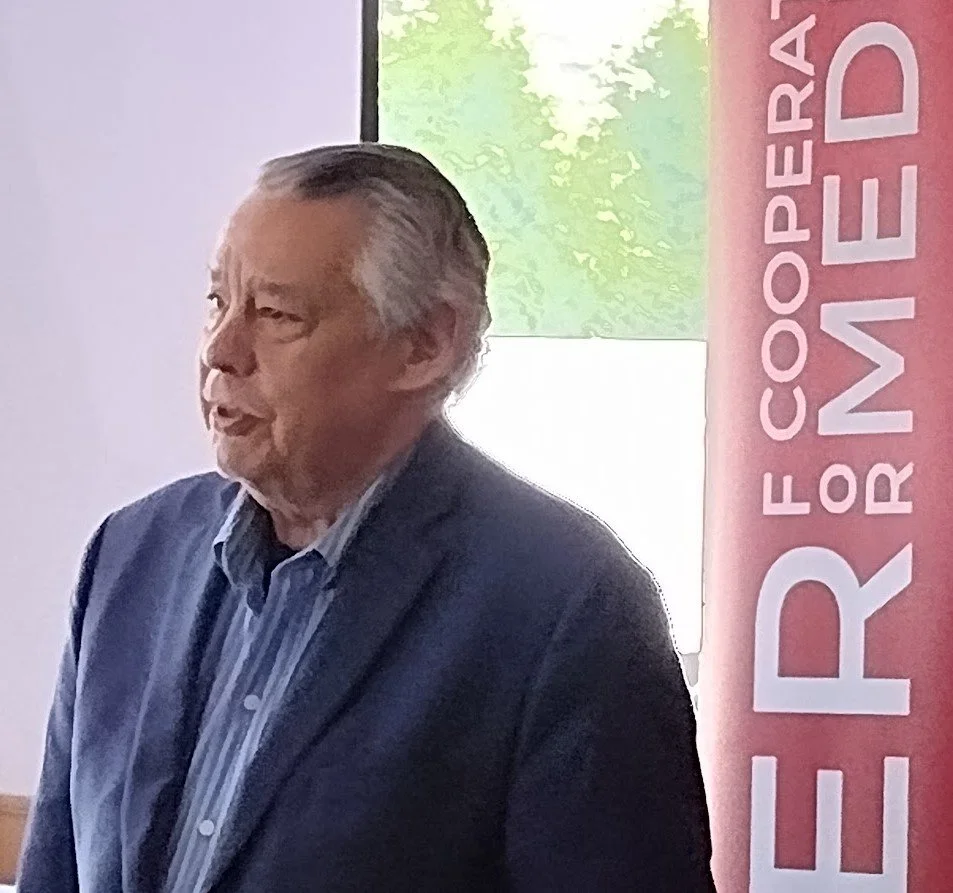Ethnic media in NJ: Robust voice of people of color with less resources to sustain itself
By Marivir R. Montebon
Cliffside Park – The growth of ethnic media in the state of New Jersey had been notably staggering even during the covid pandemic. Despite the vigor, however, the ethnic and community media industry here continues to face the challenge of economic survival and sustainability.
A recently released 2019 report by the Center for Cooperative Media (CCM) at Montclair State University has noted such growth with its collaborative relationships with the community and ethnic media since 2014.
Anthony Advincula: Ethnic media have been instrumental in filling the news void for and about local communities.
Anthony Advincula, proponent of the research study “The State of Ethnic and Community Media in New Jersey,” was a personal witness to its growth. Advincula is a New York City-based journalist and communications consultant and was the national media director, writer, and editor for New America Media.
During the winter of 2014, there were only six reporters and editors who joined the CCM event, said Advincula. Today, the CCM reports more than 140 ethnic and community media outlets in New Jersey which reports in more than 15 languages — including Spanish, Arabic, Urdu, Chinese, Korean, Hungarian, Polish, Hindi, Gujarat, Punjabi, Ukrainian, Italian, Portuguese, Tagalog, Bangla and Turkish.
Advincula said that “ethnic and community media have been instrumental in filling the local news void, particularly due to their language expertise and understanding of cultural nuances within immigrant communities and communities of color.”
The growth of minority populations and ethnic media is directly related. The CCM study noted that “there is a strong correlation between the sustainability of in-language news organizations and the population of diaspora communities: When there is a significant growth in immigrant and ethnic populations in a particular area, the ethnic and community media sector thrives. Although ethnic and community news outlets do their best to attract mainstream advertisers, most of the advertising still comes from businesses and services in their own communities.”
Census data show that the Garden State is a non-white state, with Hispanics make up18% of the population, Black people are 12%, Asians 6%, and multiracial individuals 10%.
Despite its robust growth before and during the pandemic, money is still the main problem of ethnic media organizations. The CCM Report found that “majority of ethnic media in New Jersey work on a shoestring budget and have small staffs. An ethnic media newsroom with a staff size between 10 and 15, including freelancers, is a relatively large organization.”
Juan Gonzalez during the May 2023 Ethnic Media gathering sponsored by the Center for Cooperative Media at Razui Restaurant in Edison, NJ.
Additionally, the CCM Report noted that “it’s also common for ethnic media to have lone-wolf reporters serving at least 100,000 readers or more in their communities. Don Tagala of ABS-CBN News/The Filipino Channel; Mohsin Zaheer of Urdu News; and Mark Tyler of Atlantic City Focus are a “newsroom of one person,” reporting, editing and almost running the entire editorial operations of their news organization in the state.”
OSM! Online Magazine, for one, which is 11 years in existence, is a one-person media entity mostly operating in the New York and New Jersey area.
This writer with Anthony Advincula and some ethnic media friends in NJ - smiling and running on a shoe-string budget.
Significant findings of the report include:
· The number of ethnic and community news outlets in New Jersey increased by 15% since 2019.
· About 25% of ethnic and community media in the state serve Asian American communities, while 22% serve Latinos.
· Ten of these news outlets serve the Chinese community; five Korean; five Filipino; two Arab; two Muslim; one Pakistani; and one Hungarian.
· At least 16 news outlets, mostly online platforms, currently serve the African American community.
· About 85% of ethnic and community media in New Jersey are in-language and publish or broadcast in more than 15 languages other than English.
· Black, South Asian and Filipino media in the state mostly produce either English or bilingual content.
· In fiscal year 2022, based on the interviews the Center was able to conduct with publishers and editors, roughly 10% of ethnic media news outlets received advertising from NJ state agencies.
Juan Gonzalez: The US has three media industries: the corporate commercial press, which failed to properly inform the American people; the alternative press which provided a socialist perspective on corruption and power; and the ethnic media which developed when people from the Third world started to migrate to the US.
Media stalwart Juan Gonzalez said that there is a rich tradition of people of color in the US during a CCM-sponsored media conference on May 18, 2023. He cited the emergence of the native American press in the 1800s and the Chinese community papers in the 1820s. Currently, there are over 100 Spanish-language media in the US.
Gonzalez noted that the US has three media industries: the corporate commercial press, which he said failed to properly inform the American people; the alternative press which provided the socialist perspective on corruption and power; and the ethnic media which developed when people from the Third world started to migrate to the US.
Gonzalez opined that for ethnic media to thrive, it must reach out to communities of color and students in colleges and universities.
The CCM report meanwhile suggested to government agencies to create a budget for local and ethnic media for the promotion of its public services as well as the continued collaborations of local ethnic media establishments. #



